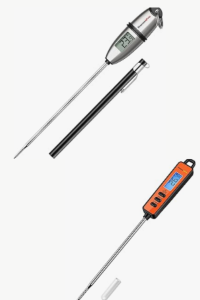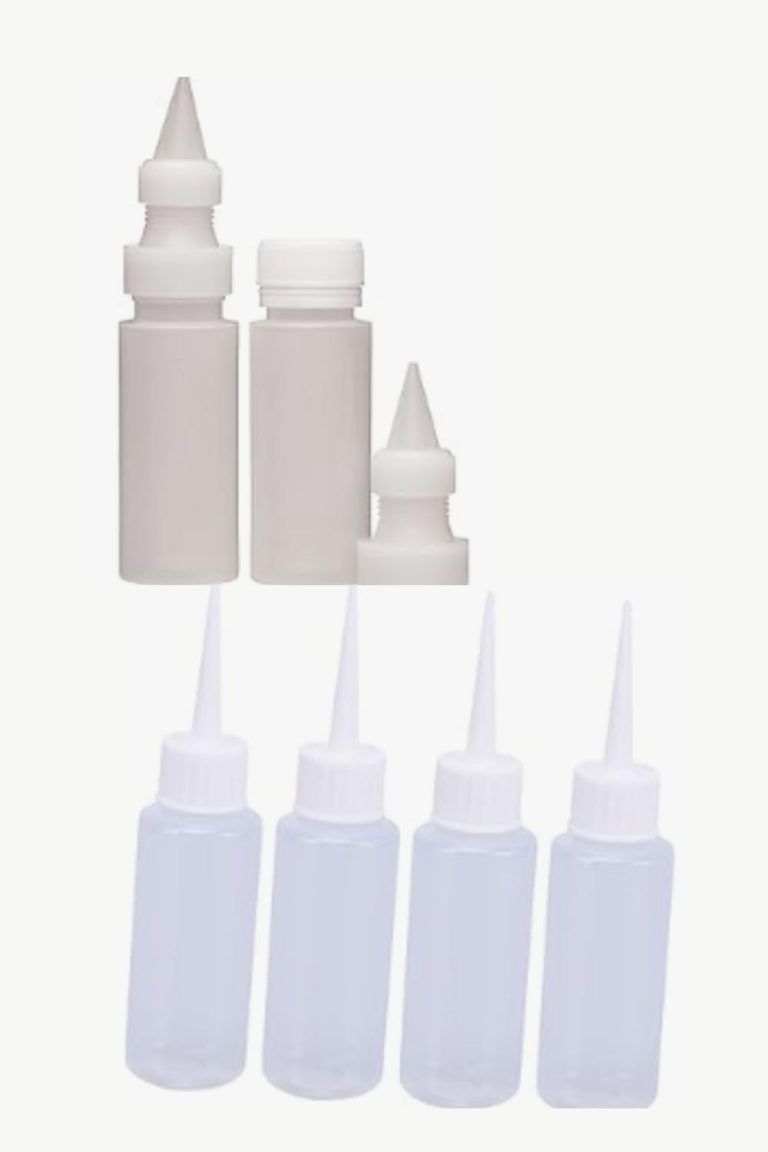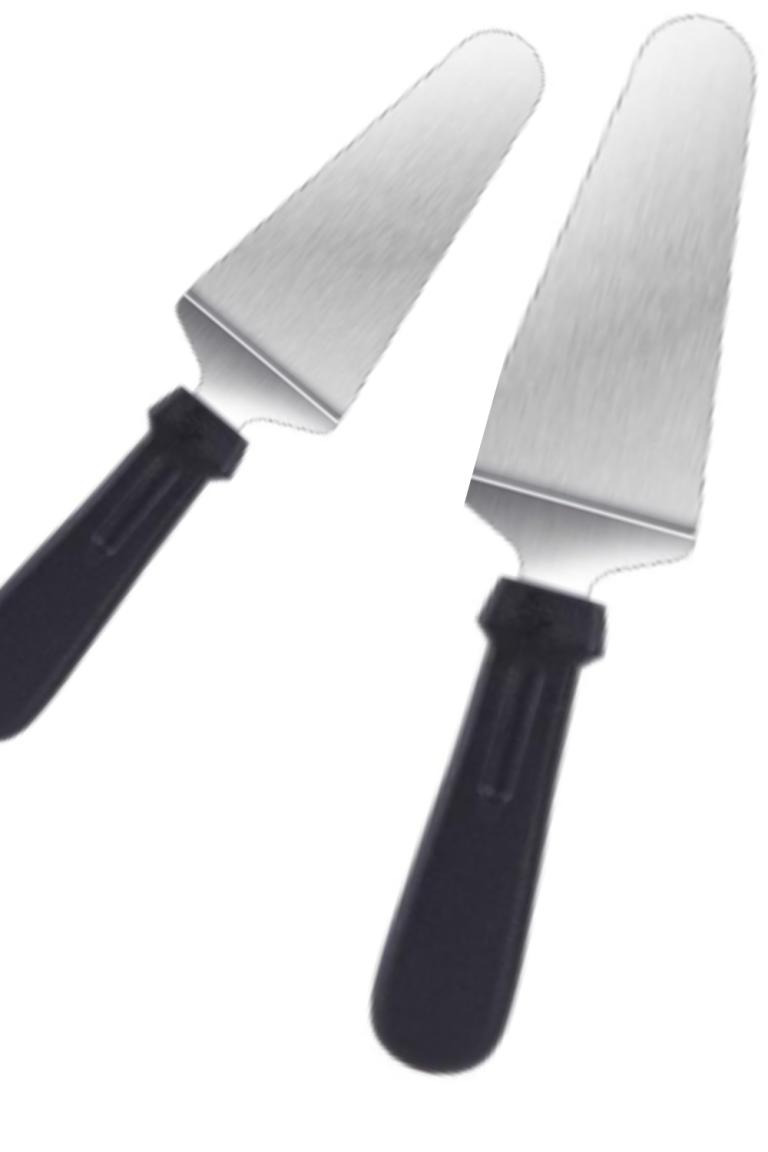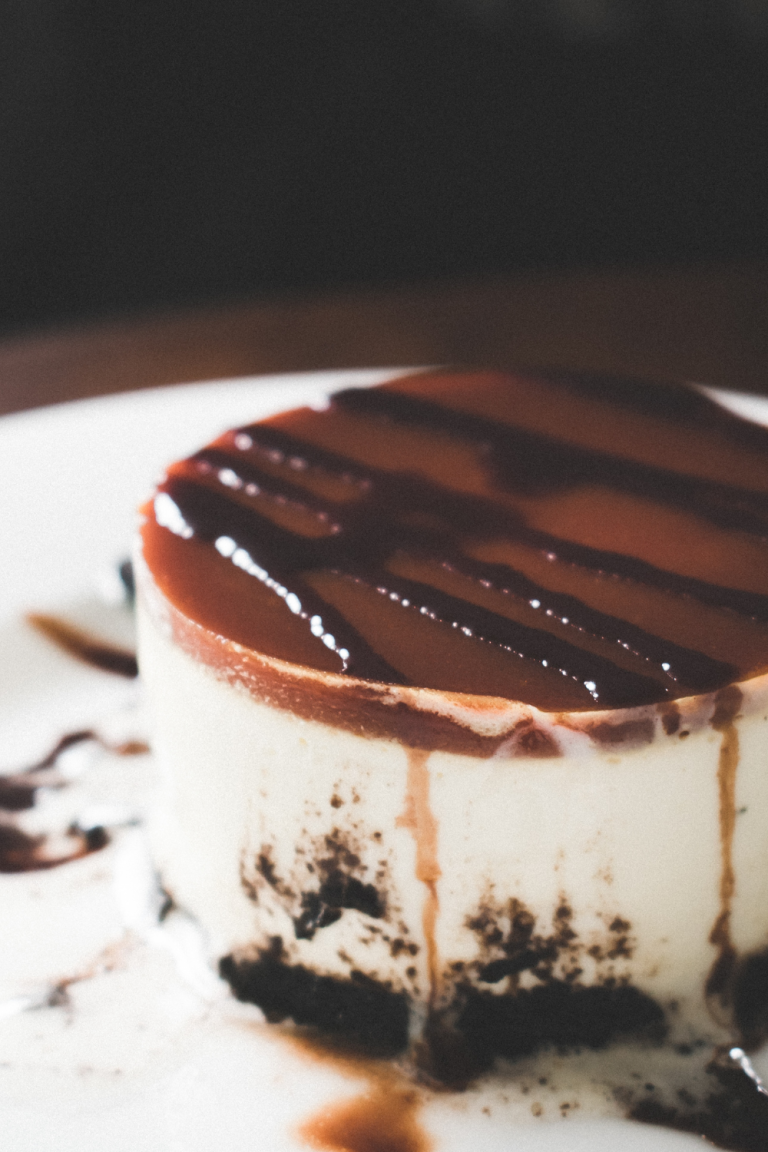MT: Meat Thermometer role in cake making Clarified
Table of Contents
ToggleWhat is a Meat Thermometer?
A meat thermometer is a kitchen tool designed to measure the internal temperature of meats during cooking. It ensures that meats are cooked to a safe temperature, preventing undercooking or overcooking. Typically, a meat thermometer features a metal probe that you insert into the thickest part of the meat, and a digital or analog display showing the temperature.=== >> Check out the right Meat Thermometer, cake tool, and ingredients that you need here <

Using a Meat Thermometer in Cake Making
Now, you might be wondering, why use a meat thermometer for cakes? Here’s the scoop:
Precision Baking
Cakes, like meats, need to be cooked to just the right temperature. Overbaking can lead to dry, crumbly textures, while underbaking can result in a soggy, raw middle. A meat thermometer helps you achieve the perfect doneness, ensuring your cake is baked just right.=== >> Check out the right Meat Thermometer, cake tool, and ingredients that you need here <
Checking for Doneness
Traditional methods like the toothpick test can sometimes be unreliable. A meat thermometer provides a more accurate measurement. For most cakes, an internal temperature of around 200°F (93°C) indicates they are done. This method is particularly useful for dense cakes like pound cakes or fruitcakes, where a toothpick might come out clean even if the cake isn’t fully cooked.=== >> Check out the right Meat Thermometer, cake tool, and ingredients that you need here <
Consistency
Using a meat thermometer ensures that each layer of a multi-layered cake is baked to the same level of doneness, providing consistency in texture and taste throughout the cake.
How to Use a Meat Thermometer in Baking
- Preheat Your Oven: Ensure your oven is preheated to the required temperature.
- Prepare Your Cake Batter: Follow your recipe, pour the batter into the cake pans, and place them in the oven.
- Insert the Thermometer: When you think the cake might be done (usually around the recipe’s suggested baking time), insert the meat thermometer into the center of the cake. Make sure it doesn’t touch the bottom of the pan.
- Read the Temperature: If the thermometer reads around 200°F (93°C), your cake is ready. If it’s lower, give it a few more minutes and check again.=== >> Check out the right Meat Thermometer, cake tool, and ingredients that you need here <
Tips for Using a Meat Thermometer in Baking
- Clean the Probe: Always clean the thermometer probe before and after each use to avoid contamination.
- Avoid Frequent Checking: Opening the oven door too often can cause temperature fluctuations. Check towards the end of the baking time.
- Use a Reliable Thermometer: Invest in a good quality meat thermometer for accurate readings.
Incorporating a meat thermometer into your baking routine might seem unconventional, but it’s a simple yet effective way to ensure your cakes turn out perfect every time. Give it a try, and you might find it becomes your new favorite baking tool.=== >> Check out the right Meat Thermometer, cake tool, and ingredients that you need here <
Drilling Deeper: Comparing Meat Thermometers for Cake Making
Now that you understand the basics of using a meat thermometer in cake making, let’s drill deeper into comparing different types of meat thermometers and how they can enhance your baking experience.
Types of Meat Thermometers
- Analog Meat Thermometers
Analog meat thermometers, also known as dial thermometers, are the traditional type with a dial face that displays the temperature. They are generally more affordable and don’t require batteries.
Pros:
- No need for batteries.
- Often cheaper.=== >> Check out the right Meat Thermometer, cake tool, and ingredients that you need here <
Cons:
- Takes longer to read temperatures.
- Less precise compared to digital versions.
- Digital Meat Thermometers
Digital meat thermometers provide a digital readout of the temperature. They are faster and more accurate, making them a popular choice among modern bakers.
Pros:
- Quick and accurate readings.
- Easy-to-read display.=== >> Check out the right Meat Thermometer, cake tool, and ingredients that you need here <
Cons:
- Requires batteries.
- Can be more expensive.
- Instant-Read Thermometers
These are a type of digital thermometer that gives a quick readout in just a few seconds. They are ideal for getting a quick snapshot of the cake’s temperature without leaving the probe inside.
Pros:
- Very fast readings.
- Highly accurate.=== >> Check out the right Meat Thermometer, cake tool, and ingredients that you need here <
Cons:
- You need to manually check the temperature, which can be inconvenient for longer bakes.
- Probe Thermometers with Timers
These digital thermometers come with a probe that you can leave in the cake while it bakes. They have a digital display outside the oven and often come with a timer or alarm to alert you when the cake reaches the desired temperature.
Pros:
- Allows continuous monitoring.
- Alerts you when the cake is done.=== >> Check out the right Meat Thermometer, cake tool, and ingredients that you need here <
Cons:
- Can be more expensive.
- Requires careful handling to avoid damage to the cable.
tips for Choosing the Right Thermometer for Baking
When it comes to selecting the best meat thermometer for cake making, consider the following:
- Accuracy: Digital and instant-read thermometers typically offer the best accuracy, which is crucial for perfect cake baking.
- Speed: Instant-read thermometers provide quick results, allowing you to check the cake’s temperature without much heat loss from opening the oven door.
- Convenience: Probe thermometers with timers are incredibly convenient as they let you monitor the cake without repeatedly opening the oven.=== >> Check out the right Meat Thermometer, cake tool, and ingredients that you need here <
Using Meat Thermometers for Different Types of Cakes
Light and Fluffy Cakes: For delicate cakes like chiffon or sponge cakes, precision is key. An instant-read digital thermometer is ideal for these types of cakes to ensure they are baked just right without collapsing.
Dense Cakes: For heavier cakes like pound cakes or fruitcakes, a probe thermometer with a timer can be very useful. It helps ensure the dense batter cooks evenly throughout without overbaking the edges.
Layer Cakes: Consistency is crucial in layer cakes. Using a digital thermometer ensures that each layer is baked to the same temperature, providing uniformity in your multi-layered masterpiece.
While meat thermometers are traditionally associated with cooking meat, they can be an invaluable tool in the realm of baking, particularly for cakes. By choosing the right type of thermometer and understanding how to use it effectively, you can take your cake-making skills to the next level.=== >> Check out the right Meat Thermometer, cake tool, and ingredients that you need here <
Comparison Table of Meat Thermometers for Cake Making
Here’s a comparison table highlighting the different types of meat thermometers and their suitability for cake making:
| Feature/Type | Analog Thermometer | Digital Thermometer | Instant-Read Thermometer | Probe Thermometer with Timer |
|---|---|---|---|---|
| Accuracy | Moderate | High | Very High | High |
| Speed | Slow (takes time to stabilize) | Fast | Very Fast (seconds) | Fast |
| Ease of Use | Simple | User-friendly | Very user-friendly | Very user-friendly |
| Cost | Low | Moderate | Moderate to High | High |
| Batteries Required | No | Yes | Yes | Yes |
| Continuous Monitoring | No | No | No | Yes |
| Alerts/Timers | No | No | No | Yes (alert when cake is done) |
| Recommended for | General use, budget option | Precision baking, versatile | Quick checks, precision baking | Long bakes, consistency in layers |
Key Notes and Considerations
- Accuracy and Precision
- Digital and instant-read thermometers offer the best accuracy, crucial for perfect cake texture.
- Analog thermometers are less precise but can suffice for general use.
- Speed of Reading
- Instant-read thermometers provide the fastest readings, ideal for quick checks.
- Analog thermometers take longer, which may lead to more oven door openings and heat loss.
- Ease of Use
- Digital and instant-read thermometers are generally more user-friendly, with clear displays.
- Analog thermometers can be harder to read, especially through a fogged oven door.
- Cost
- Analog thermometers are the most budget-friendly option.
- Digital and probe thermometers with timers can be more expensive but offer additional features like continuous monitoring and alerts.
- Battery Requirement
- Analog thermometers do not require batteries, reducing ongoing costs.
- Digital, instant-read, and probe thermometers need batteries, which means you’ll need to keep spares on hand.
- Continuous Monitoring
- Probe thermometers with timers are excellent for continuous monitoring without opening the oven, ensuring even baking.
- Other types require manual checks, which might not be as convenient for long bakes.
- Usage Recommendations
- For light and fluffy cakes, use an instant-read or digital thermometer for precision.
- For dense cakes, a probe thermometer with a timer is highly effective.
- For layer cakes, ensure each layer is baked uniformly using a digital or probe thermometer.
FAQs on Using a Meat Thermometer for Cake Making
Q: Why should I use a meat thermometer for baking cakes?
A: A meat thermometer ensures precise internal temperature, preventing overbaking or underbaking, leading to perfectly baked cakes every time.
Q: What temperature should my cake reach to be fully baked?
A: Most cakes are done when they reach an internal temperature of around 200°F (93°C).
Q: Can I use any meat thermometer for baking cakes?
A: Yes, but digital or instant-read thermometers provide more accuracy and convenience. Probe thermometers with timers are also excellent for continuous monitoring.
Q: How do I properly insert the meat thermometer into the cake?
A: Insert the thermometer into the center of the cake, avoiding contact with the pan. This gives an accurate measure of the cake’s internal temperature.
Q: Are there specific cakes that benefit more from using a meat thermometer?
A: Dense cakes like pound cakes and fruitcakes, as well as multi-layered cakes, benefit greatly from the precision of a meat thermometer.
Q: How often should I check the cake’s temperature?
A: Check towards the end of the baking time recommended by your recipe. Avoid opening the oven too frequently to maintain consistent baking temperature.
Q: What’s the best type of meat thermometer for a beginner baker?
A: A digital or instant-read thermometer is user-friendly and provides quick, accurate readings, making it ideal for beginners.=== >> Check out the right Meat Thermometer, cake tool, and ingredients that you need here <
Final Words
Incorporating a meat thermometer into your baking routine might initially seem unconventional, but it’s a game-changer for achieving consistently perfect cakes. Whether you’re baking a light and airy sponge cake or a dense and rich fruitcake, using a meat thermometer ensures that your cakes are baked to perfection every time. By understanding the different types of thermometers and how to use them effectively, you can elevate your baking skills and enjoy delicious, perfectly baked cakes.

Hi!
I’m Mike, the creator of Forum Foodies. In my own personal experience, understanding ingredients is key to great cooking.
Forum Foodies offers guides on various ingredients, from staples to exotic finds. Join our community, share your experiences, and learn from fellow food lovers.
Have questions or suggestions? Email me at info@forumfoodies.com. Let’s embark on this delicious adventure together.
Happy cooking.
Mike/
Related Posts
- MM: Meat Mallet role in cake making Explained
In this topic, I'm going to talk about the meat mallet and its surprising role…
- MP: Meat Pounder role in cake making Clarified
In this topic, I'm going to talk about the Meat Pounder (MP) in my own…
- CP: Candy Thermometer role in cake making Clarified
In this topic, I'm going to talk about the candy thermometer in my own personal…
- BT: Baking Thermometer role in cake making Explained
In this topic, I'm going to talk about the importance of a Baking Thermometer in…
- CT: Cake Tester role in cake making Clarified
In this topic, I'm going to talk about a tool that plays a crucial role…
- CS: Cake Stenci role in cake making Explained
In this topic, I'm going to talk about cake stencils and their role in cake…
- CB: Cake Board role in cake making Explained
In This Topic I'm Going to Talk About Cake Boards in My Own Personal Experience…
- CS: Cake Slicer role in cake making Clarified
In this topic, I'm going to talk about the CS - Cake Slicer, drawing from…
- AIR: Airing role in cake making Explained
In this topic, I’m going to talk about the concept of "air" and "airing" in…
- CRM: Creaming role in cake making Explained
In this topic, I'm going to talk about the creaming method and its role in…
- AC: Angled Cake Spatula role in cake making Explained
In this topic, I'm going to talk about the Angled Cake Spatula and its role…
- CC: Cake Comb role in cake making Clarified
In this topic, I'm going to talk about the CC - Cake Comb and its…
- WHP: Whipping role in cake making Explained
In this topic, I'm going to talk about WHP - Whipping. From my own personal…
- KB: Kneading Bowl role in cake making Explained
In this topic, I'm going to talk about the kneading bowl and its role in…
- NB: Nut Butter Maker role in cake making Explained
In this topic, I'm going to talk about the Nut Butter Maker and its role…





